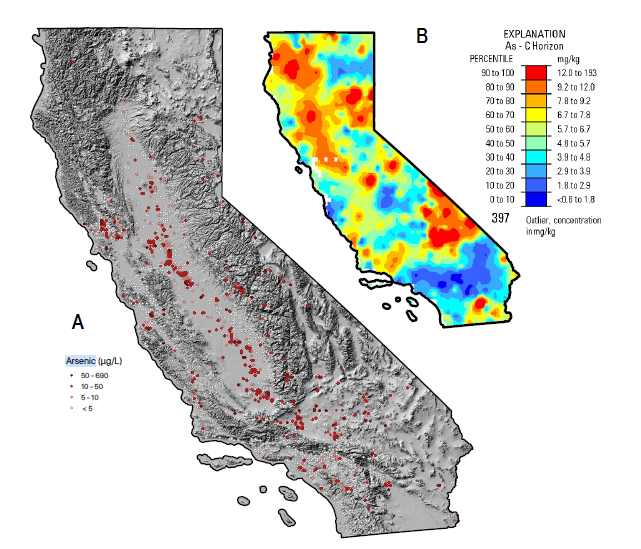This blog post was written by Sarah Fakhreddine, a former Lokey fellow in EDF’s Western Water program.
California’s Sustainable Groundwater Management Act (SGMA), signed into law five years ago, requires local leaders to balance groundwater demand and supplies for the first time. Groundwater is an important foundation of California’s water system, and SGMA is a crucial way of strengthening that foundation and creating a more resilient future for the state.
However, balancing groundwater budgets will not be easy. And this major challenge is further complicated by the fact that activities designed to increase groundwater supplies can unintentionally cause new groundwater quality problems or worsen existing contamination.
A new working paper that Environmental Defense Fund co-authored with Stanford’s School of Earth, Energy & Environmental Sciences; Green Science Policy Institute; and the Energy and Environmental Sciences Area of Berkeley Lab outlines how groundwater management activities can affect not only the quantity but also the quality of groundwater.
Our paper aims to help groundwater sustainability agencies and local communities avoid inadvertently contaminating supplies as they change management practices to comply with SGMA. In fact, it’s even possible for some SGMA projects aimed at increasing groundwater quantity to actually improve groundwater quality, too, the paper notes.
SGMA is prompting local leaders to consider a host of new activities to balance their groundwater budgets. But as they focus on supply, they shouldn’t forget about water quality. Share on X
Recommendations for water managers facing January deadline
Twenty-one groundwater sustainability agencies with the most at-risk groundwater basins face a Jan. 30 deadline to submit plans to balance their groundwater supply and demand within 20 years.
One activity under consideration by many agencies is called managed aquifer recharge – the intentional replenishment of water into aquifers for future use or habitat. Managed aquifer recharge aims to increase groundwater supplies but can unintentionally mobilize soil contaminants into the underlying groundwater. Similarly, both strategies will be important to helping balance groundwater budgets but must be done thoughtfully.
Our paper focuses on naturally occurring contaminants, such as arsenic, chromium and uranium, as well as contaminants that have received only limited guidance and regulations, but can pose a threat to human and ecosystem health, such as polyfluroalkyl substances.

(A) Groundwater concentrations (μg/L) of arsenic from Jan. 2018 – Jan. 2019 and (B) total arsenic concentration (mg/kg) in the soil C Horizon (approximately 2.6-3.3 ft depth interval). The primary maximum contaminant level for arsenic is 10 μg/L.
In our paper, we highlight five key considerations to protect groundwater quality at the onset of initiating a new groundwater management activity:
- Site selection. Careful consideration should be given to the site suitability for the management action and its proximity to drinking water supplies.
- Current conditions. It is important to characterize the current chemical and hydrological conditions in an aquifer, and anticipate how these conditions might change within the aquifer. Avoiding any large shifts in geochemical and hydrological conditions can help minimize the likelihood of causing or exacerbating contamination.
- Monitoring. Monitoring programs should focus on contaminants most likely to occur based on existing and anticipated chemical and hydrological conditions. In some cases, certain water quality measurements can be proxies for the likelihood of contaminants to be present in groundwater.
- Managed aquifer recharge. Because these projects are the most likely to cause large shifts in geochemical and/or hydrological conditions, they deserve special attention when evaluating potential water quality impacts.
- Contingency plan. While precautions should be taken to avoid groundwater quality problems, a plan should be in place to address potential groundwater contamination events, especially if supplies are used for drinking water.
SGMA is prompting local leaders to consider a host of new activities to balance their groundwater budgets. But as they focus on supply, they shouldn’t forget about water quality.
If groundwater managers plan new projects in a holistic way that incorporates both water quantity and quality considerations, they will be able to avoid contamination and in some cases even improve quality and increase quantity at the same time.









